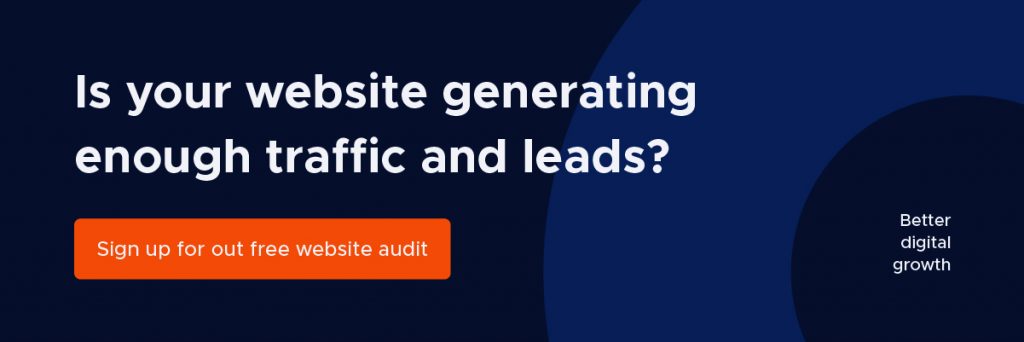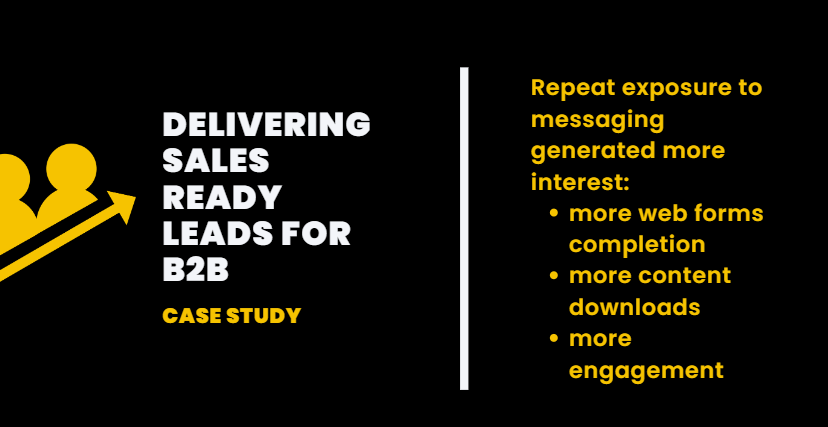We’ve said it before, but this is so important so please stick with us: your website is your most powerful sales tool. Slow loading pages, poor search engine optimization, not having a conversion path in place or simply poor content can hurt your marketing efforts and get you to lose valuable time and money. That’s why a website audit is vital!
Much like any other tool or process in your company, your website deserves an audit to reveal areas that are not performing very well, things that need to be updated or simply removed. At the end of the day, it’s a health check-up to ensure everything is working smoothly and that your website is in top shape.
We are going to explain what you should look for in a website audit and how to use that information to improve traffic and conversion rates.
Jump to any section by clicking on the corresponding link.
Start with the foundation: website performance
Your website’s health has a great impact on search engine rankings, in other words on how easy it is for potential customers to find you in search results, but also on user experience.
- Page speed is an important signal for search engines, not to mention slow loading pages provide a bad user experience. Visitors are likely to abandon pages that take more than 3 seconds to load, so ensuring your website is fast enough is one of your first priorities. To test your webpages’ speed, you can use Google PageSpeed, Pingdom Website Speed Test or for more detailed insights WebPageTest. Together with a score, you will also receive recommendations on how to make your webpages faster.
- Security. If you don’t already have an SSL certificate installed, do get one. Besides making your users feel safe while browsing your website, it can also give you a small boost in rankings.
- HTTPS status codes. Check for 5xx and 4xx errors and try to keep them to a minimum. While having zero errors is not really feasible, make sure you have as few as possible, to provide both a good UX and help with search rankings as well. Google Search Console is a free yet super effective tool you can use to identify broken pages.
- Are robots.txt or no index directives blocking important pages? Robots.txt instruct search engine bots which pages or files they can or can’t request from your site, in order to avoid overloading your site with requests. You can test if a page or resource is blocked by a robots.txt rule here. No index directives, on the other hand, are used to firmly keep pages out of search results, such as membership pages. Verify that your important pages are not blocked by mistake.
- Crawlable pages. You want to make sure that your most important webpages are indexed by search engines and the easiest way to do it is to check the Coverage report in Google Search Console, in the Index section. It’s also useful to check Crawl Information report in Bing Webmaster.
- Sitemap. Having a sitemap is really useful for your SEO, as it informs search engines what are your most important pages to be crawled and indexed. If you don’t already have one, you can create it using xml-sitemaps.com.
- Mobile-friendly design. As mobile traffic surpassed desktop, you should expect most of your visitors to browse your site on a mobile device. Therefore do take the time to test how your website renders and performs across phone and tablet devices.
On-page SEO: get your metadata in place
On-page optimization is an important ranking factor, yet it is often overlooked and you would be amazed how many websites don’t even have the main pages optimized. You will want to pay attention to the following elements:
- Titles. Include your primary keyword and keep titles less than 50-60 characters.
- URLs. Use your primary keyword and limit the length to 75 characters.
- Meta description. Create a catchy meta description that includes target keywords as well, and keep them on point, 150 characters or less.
- Page copy. The copy should ideally incorporate your target keywords, however, your main priority is creating compelling content, that flows naturally, not stuffing your text with keywords.
- Headings. Take advantage of headings to help search engine grasp the main topics on a given page. Your headings will ideally include a target keyword and will be less than 70 characters.
- Image ALT text. It’s a good practice to assign images in gif, jpeg or png “alt attributes” to give search engines a description of the visual content.
If you want to read further, we created this guide of best practices for on-site optimization. To check your on-page optimization, you can use a free plugin such as SEO Quake or if you prefer a professional SEO platform, both SEMrush (there is a 7 days trial offer with this link:) or MOZ are very insightful and easy to use.
Content
Content is just as important as website performance. Useful, relevant and well-written content is what will keep your visitors interested.
The main goals you want to achieve with your content are communicating your unique value proposition, increasing trust as well as educating your prospects and clients. And so we encourage you to take the time to explore, ask questions and learn what you can improve.
- Communicate your value proposition. Do you make it clear right away what is different about your offering and how your product or service is better than the competitions’? Is your unique selling proposition displayed upfront on your home page or do visitors need to navigate several pages to find it?
- Increase trust. People buy from companies they trust or companies recommended by their peers. Do you provide enough information to gain visitors’ trust? Do you display customers’ testimonials or other credentials (such as the number of served customers, industry awards etc)? Do you take the opportunity to address most common objections your prospects raise?
- Educate. Do you provide high-quality content to educate your prospects and customers? Do you create content that answers prospects’ questions at all stages of their buying cycle? How is your content compared to your competitors’?
Understand if you need to tweak your messaging on your home and services/products pages and if you need to build more blog content, update it, or just create some pieces of content that will put your competition to shame.
Conversion paths: how do you connect with visitors?
Conversion paths help you turn anonymous visitors into known leads. When done right, they can generate qualified leads with which you can open a conversation. If you don’t have any conversion path in place, you are most likely leaving valuable leads on the table.
To gauge how well you are engaging with your leads, take a look at the following areas:
- Landing pages. Do you have (enough) landing pages in place to promote content offers? Are those landing pages optimized for conversion? Do you clearly communicate the value of the offer presented? Is the offer valuable enough for the visitors to give you the information you require? If you don’t have any landing page in place, where can you start?
- CTAs. Are your call to action messages compelling enough? Do they invite visitors to take action? Are the call to action buttons placed in the most visible spots?
- Forms. Are you asking for enough information to qualify a lead? Is the exchange fair, is the amount of information you ask worth the offer?
- Thank you page. The final piece of a conversion path is a thank you page. Are your Thank You pages generic? Or do they provide more complementary content?
With the learnings gathered in your website audit, you can create a marketing roadmap, as you now know what are the top priority areas to work on.





